NSSL Publications: Books
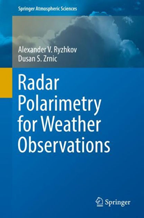
Radar Polarimetry for Weather Observations
Alexander V. Ryzhkov, Dusan S. Zrnic
Spriniger, 2019, 487 pp
This monograph offers a wide array of contemporary information on weather radar polarimetry and its applications. The book tightly connects the microphysical processes responsible for the development and evolution of the clouds’ bulk physical properties to the polarimetric variables, and contains the procedures on how to simulate realistic polarimetric variables. With up-to-date polarimetric methodologies and applications, the book will appeal to practicing radar meteorologists, hydrologists, microphysicists, and modelers who are interested in the bulk properties of hydrometeors and quantification of these with the goals to improve precipitation measurements, understanding of precipitation processes, or model forecasts.
978-3-030-05092-4 (Print) · 978-3-030-05093-1 (eBook)
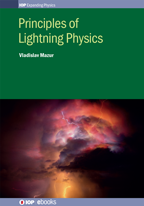
Principles of Lightning Physics
Vladislav Mazur
IOP, 2016, 200 pp
Principles of Lightning Physics presents and discusses the most up-to-date physical concepts that govern many lightning events in nature, including lightning interactions with man-made structures. Historically, lightning research has been the science of observations, using continuously improving tools. The quality of new lightning observations and measurements has greatly improved during the past 30 years, due to newly developed tools, technology and techniques. Significant progress has also been made in the physical understanding of lightning processes during the same period. This book presents the current understanding of lightning physics at a level suitable for researchers, advanced students and well-educated lightning enthusiasts.
The author’s approach to understanding lightning—to seek out and show what is common to all lightning flashes—is illustrated by an analysis of each type of lightning and the multitude of lightning-related features. Using this approach, the book examines the work that has gone into the development of new physical concepts, and provides critical evaluations of the existing understanding of the physics of lightning and the lexicon of terms and definitions presently used in lightning research.
978-0-750-31153-3 (Print) · 978-0-750-31152-6 (Online)
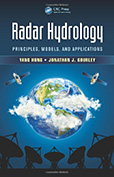
Radar Hydrology: Principles, Models, and Applications
Yang Hong, Jonathan J. Gourley
CRC Press, 2014, 176 pp
Radar Hydrology: Principles, Models, and Applications provides graduate students, operational forecasters, and researchers with a theoretical framework and practical knowledge of radar precipitation estimation. The only text on the market solely devoted to radar hydrology, this comprehensive reference:
- Begins with a brief introduction to radar
- Focuses on the processing of radar data to arrive at accurate estimates of rainfall
- Addresses advanced radar sensing principles and applications
- Covers radar technologies for observing each component of the hydrologic cycle
- Examines state-of-the-art hydrologic models and their inputs, parameters, state variables, calibration procedures, and outputs
- Discusses contemporary approaches in data assimilation
- Concludes with methods, case studies, and prediction system design
- Includes downloadable MATLAB® content
Flooding is the #1 weather-related natural disaster worldwide. Radar Hydrology: Principles, Models, and Applications aids in understanding the physical systems and detection tools, as well as designing prediction systems.
978-1-46-651461-4 (Print)
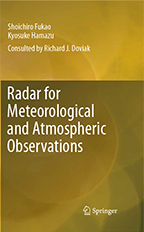
Radar for Meteorological and Atmospheric Observations
Shoichiro Fukao, Kyosuke Hamazu, Consulted by Richard J. Doviak
Springer, 2013, 537 pp
Epoch-making progress in meteorology and atmospheric science has always been hastened by the development of advanced observational technologies, in particular, radar technology. Meteorological radar and atmospheric radar each has a different history and has been developed independently. Particular radar activities have been conducted within their own communities. Although the technology of these radars draws upon many common fields, until now the interrelatedness and interdisciplinary nature of the research fields have not been consistently discussed in one volume containing fundamental theories, observational methods, and results. This book bridges the gap in our understanding of weather and atmospheric radar. The book consists of two parts. The first half mainly discusses the theoretical bases of weather and atmospheric radar, and the second half describes actual systems and observations made with these radars.
ISBN 978-4-431-54333-6 (Print) · 978-4-431-54334-3 (Online)
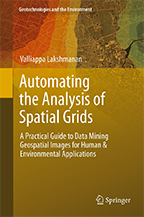
Automating the Analysis of Spatial Grids: A Practical Guide to Data Mining Geospatial Images for Human and Environmental Applications
Valliappa Lakshmanan
Springer, 2012, 330 pp
The ability to create automated algorithms to process gridded spatial data is increasingly important as remotely sensed datasets increase in volume and frequency. Whether in business, social science, ecology, meteorology or urban planning, the ability to create automated applications to analyze and detect patterns in geospatial data is increasingly important. This book provides students with a foundation in topics of digital image processing and data mining as applied to geospatial datasets. The aim is for readers to be able to devise and implement automated techniques to extract information from spatial grids such as radar, satellite or high-resolution survey imagery.
ISBN 978-94-007-4074-7 (Print) · 978-94-007-4075-4 (Online)
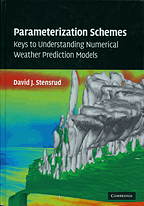
Parameterization Schemes: Keys to Understanding Numerical Weather Prediction Models
David J. Stensrud
Cambridge University Press, 2007, 459 pp
This is the first book to provide in-depth explorations of the most commonly used types of parameterization schemes that influence short-range weather forecasts and global climate models. Each chapter covers a different type of parameterization scheme, starting with an overview explaining why each scheme is needed, and then reviewing the basic theory behind it. Several parameterizations are summarized and compared, followed by a discussion of their limitations. Review questions at the end of each chapter enable readers to monitor their understanding of the topics covered, and solutions are available at www.cambridge.org/9780521865401.
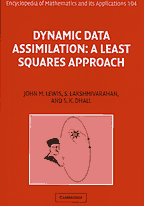
Dynamic Data Assimilation: A Least Squares Approach
John M. Lewis, S. Lakshmivarahan, Sudarshan Dhall
Cambridge University Press, 2006
This book develops the mathematical tools that are central to present-day data assimilation at operational weather prediction centers worldwide. It is enriched by “pencil and paper” exercises as well as those that make use of mathematical software packages such as MATLAB. Each of the 32 chapters ends with pointers to the literature and discussions of historical foundations of the subject. As stated by reviewers of the book: “...it essentially covers all that we know about state estimation for dynamically evolving systems—a grand effort on a much needed textbook. A treasure and wonderful resource for students.”
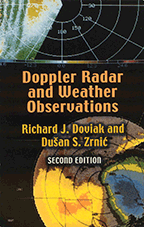
Doppler Radar and Weather Observations, Second Edition
Richard J. Doviak and Dusan S. Zrnic
Dover Publications, 2006, 592 pp (paperback)
Errata 2nd edition, 3rd and 4th printings (.doc, 1.5 MB) (19 Sep 2017)
Errata 2nd edition, 1st and 2nd printings (.pdf, 217 kB) (29 May 2012)
Color Plates 1 2 3 4
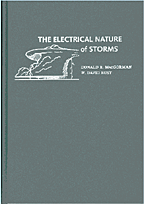
The Electrical Nature of Storms
Donald R. MacGorman and W. David Rust
Oxford University Press, 1998
Information for The Electrical Nature of Storms with links to a Table of Contents and Errata →
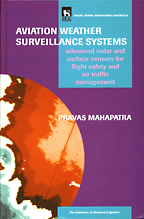
Aviation Weather Surveillance Systems: advanced radar and surface sensors for flight safety and air traffic management
Pravas Mahapatra with contributions from Richard J. Doviak, Vladislav Mazur, and Dusan S. Zrnic
The Institution of Electrical Engineers and The American Institute of Aeronautics and Astronautics, 1999

